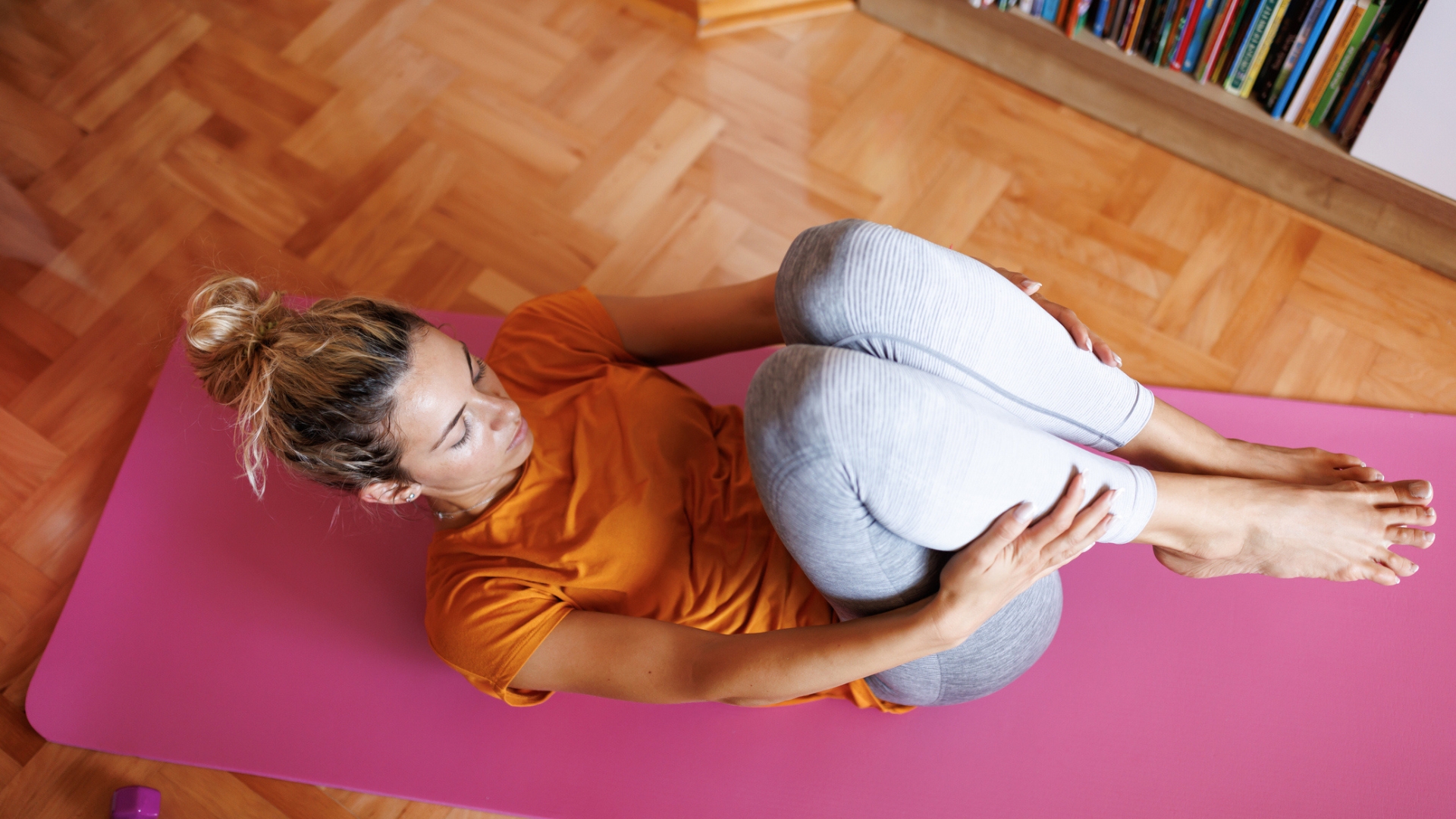A Pilates instructor says your back feels stiff because you're not moving it enough—try doing these four spine-lengthening moves to fix it
These bodyweight moves will help create some space in your spine


Modern-day living can be hard on your back, especially if you spend most of your day hunched over a desk or sitting on a long commute.
“We’re simply not moving our bodies through full ranges of motion as often as we need to,” says Pilates educator and practitioner James Shaw, founder of James Shaw Pilates.
“The body is designed to move, and when it doesn’t get enough movement or variety, the back is often the first place we feel it.”
So, what’s the solution? Along with moving more and sitting less, Shaw says that Pilates—a slow and controlled mind-body practice—can help to build balance and equilibrium throughout the body.
“When the body begins to work more cohesively, tension can ease and the spine can move more freely,” Shaw explains.
“This can help to alleviate pain, tightness and discomfort and create a sense of space and length through the back that can feel almost like a massage from the inside.”
Shaw has shared four moves that can help restore some freedom to the spine.
Start your week with achievable workout ideas, health tips and wellbeing advice in your inbox.
1. Standing roll-down
Reps: 6-8
Why: “This helps improve segmental movement through the spine [moving vertebra by vertebra], while gently connecting the abdominals and releasing the back body,” says Shaw.
How to do it:
- Stand with your feet hip-width apart, knees slightly bent.
- Raise your arms overhead and gently roll down your torso, creating a C-curve through your spine.
- Move vertebrae by vertebrae, until your fingers are close to the floor.
- Let your head and arms hang for a few seconds.
- Stand slowly, restacking your spine, keeping your abdominals engaged and arms extended.
2. Spine stretch forward
Reps: 6-10
Why: “It stretches the hamstrings and the entire back of the body, while mobilizing and lengthening the spine,” says Shaw. “It also engages the abdominal muscles, which will support the back.”
How to do it:
- Sit with your legs extended in front, knees bent if needed and feet flexed.
- Extend your arms in front at shoulder-height.
- Inhale and sit up tall.
- Exhale, lean forward, extending your arms toward your toes.
- Move forward and back in this position, performing small, rapid movements.
- Inhale to restack to your upright position.
3. One leg circle
Reps: 6-8 in each direction
Why: “This trains pelvic stability and teaches the leg to move freely from the hip—not the lower back—which helps create more freedom in the hips and pelvis,” says Shaw.
How to do it:
- Lie on your back with one leg extended up.
- Keep the pelvis level and anchored to the floor.
- Rotate your leg from the hip joint, creating six to eight smooth, controlled circles.
- Reverse the movement then repeat on the other leg.
4. Rolling like a ball
Reps: 6-10
Why: “This is essentially your first inversion—where your head is below your hips—in Pilates,” says Shaw. “The rolling action gently massages the muscles along the spine and encourages support from the abdominals.”
How to do it:
- Sit on the floor and hold your shins, bending your legs into your torso.
- Engage your core and balance on your buttocks, just behind your sitting bones.
- Inhale as you gently roll back onto your shoulder blades.
- Exhale as you roll forward. That’s one repetition.
Becks is a freelance journalist and writer with more than 7 years of experience in the field. She writes health and lifestyle content for a range of titles including Live Science, Top Ten Reviews, Tom’s Guide, Stylist, The Independent, and more. She also ghostwrites for a number of Physiotherapists and Osteopaths.
Health has been a big part of Becks’ lifestyle since time began. When she’s not writing about the topic of health, she’s in the gym learning new compound exercises. And when she’s not in the gym, she’s most probably reading.
You must confirm your public display name before commenting
Please logout and then login again, you will then be prompted to enter your display name.
